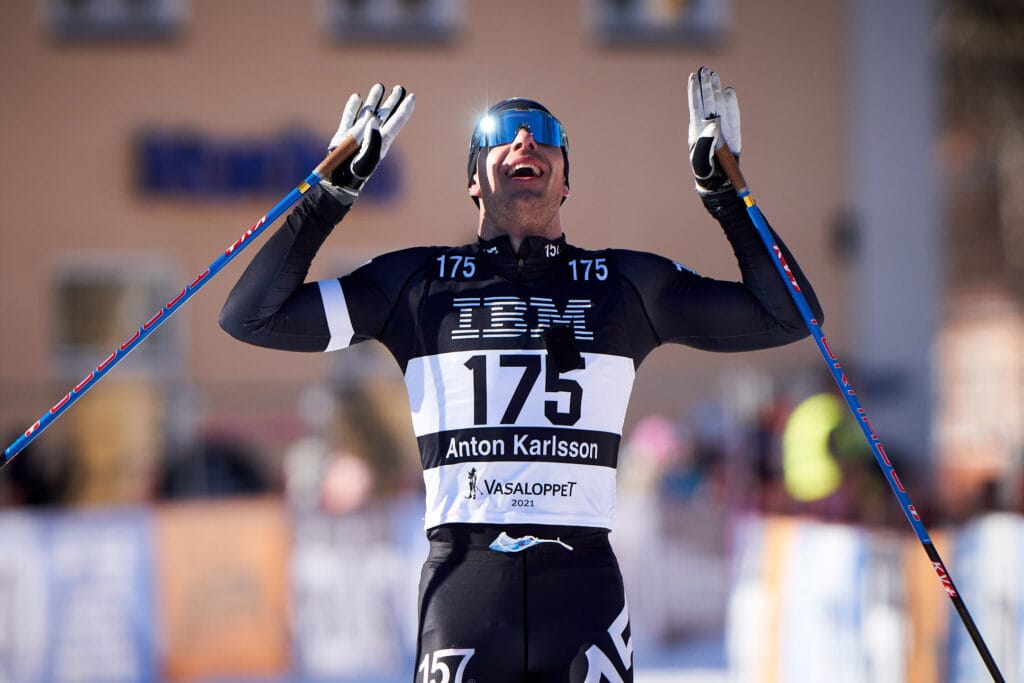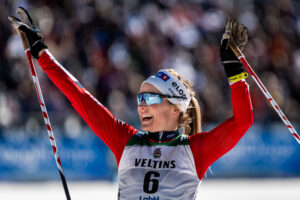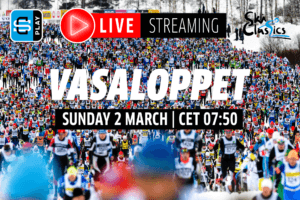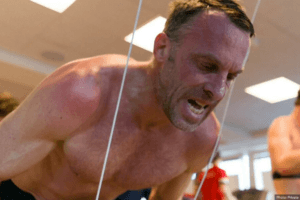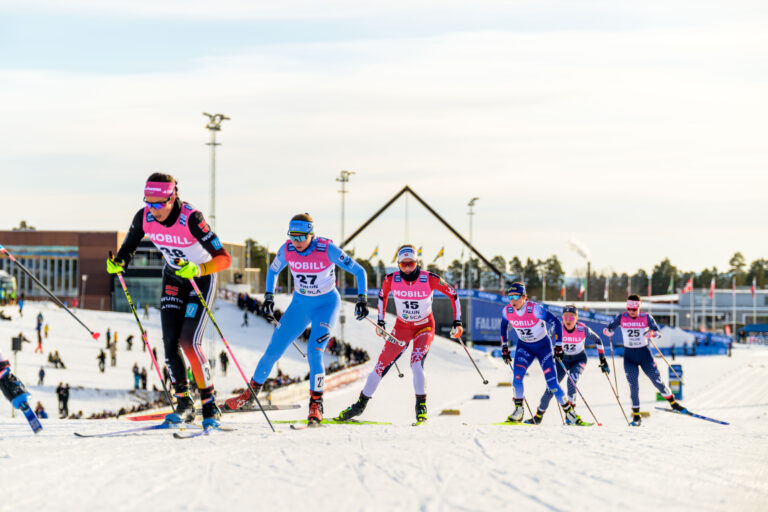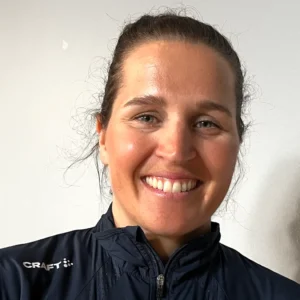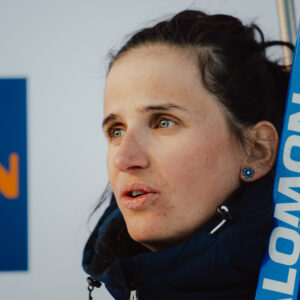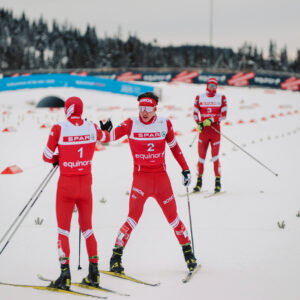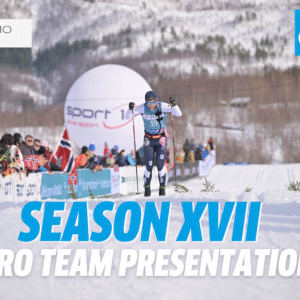Focus Week: Vasaloppet’s Runner-Up Tips On How To Develop Your Rollerskiing
Anton Karlsson finished second at Vasaloppet in 2021. Here you can read Karlsson’s tips on becoming a better rollerskier.
“Play on the skis! Practice track changes also on asphalt and practice cornering. You will benefit from this for the winter,” Karlsson writes in his tips.
We have rolled into the summer month of June. And for those with big goals for the upcoming winter, there is still plenty of time to prepare.
In the coming weeks, we here at ProXCskiing.com will immerse in the world of rollerskiing: what equipment should I have; how should I train; which competitions should I go and not least, which rollerskis should I buy.
Earlier this week, we gave tips on what to look for when choosing rollerskis and poles, boots, helmets and glasses.
In this article, Vasaloppet’s second place in 2021, Anton Karlsson, gives tips about developing your rollerskiing.
General Tips for Rollerskiing
1. Safety is most important. A helmet is a must and other protection if you wish. Make sure you have visible clothes if you rollerski with traffic, glasses if you train in a group, and keep track of the equipment. Inform someone where you intend to go and bring a mobile phone if possible.
2. Start or end each session by sharpening the pole tips. Both the tips and the mood last longer. In addition, the training is better.
3. Always have at least one spare tip with you. If you do not have a quick system for changing the tip, bring a lighter in the drinking belt. It has saved me many times.
4. Change the right and left skis when you have ridden half your intended training session. Over time, before your workout, you can analyze the wear on your wheels and adjust accordingly.
5. Rolling resistance – standard resistance 2 is often too light compared to the conditions you will encounter in the winter. Depending on the brand, in my opinion, rolling resistance 3 or 4 is often more appropriate regardless of your level and ambition. Also, remember that the conditions vary in the winter; maybe you should also change the rolling resistance in the summer.
6. Maintenance – rollerskis are not maintenance-free. Be sure to rinse and dry your rollerskis after the training so you can enjoy them longer. Store them dry and cool. Ensure that the wheel nuts, mudguards, and screws for the binding are as they should be before you start to minimize the risk of accidents. Also, rinse your boots and pay special attention to the zippers that tend to break if you do not clean and lubricate them continuously.
7. Imitate snow conditions – be careful with weight transfer and that the width between the skis matches the winter classic tracks. If possible, step through curves the same way as in winter instead of pushing yourself through as you do with carving skis.
8. Skiing skills – play on the skis! Practice track changes also on asphalt, practice cornering. Build a simple slalom course, jump over a stick and do different accelerations. Many who are extremely good at the double poling machine or ski hard kilometer after kilometer on the road at a high pace find it difficult at winter competitions when there are more skiing skills involved with curves, accelerations, competitors, and track changes involved. Here you have a lot to earn.
Training Development
1. Specificity – If your ambition is to be as good as possible for the winter competitions, you should train as specifically as possible on what you want to be good at. Example: If your ambition is to double pole Vasaloppet, most of your training should consist of double poling.
2. Progression – We are humans and not machines. The body is amazing at adapting if you give it time to do so. Be careful with your progression and make an increasing plan as you increase your training volume. Example: I want to cover 50km on rollerskis in 8 weeks. An increasing solution means that my long training increase by about 5km per week until I reach my goal. A non-increasing solution can take you to the goal faster but results more often in damage than achieved goals.
3. Continuity – exercise is a fresh product. Development must be maintained. Persevere, sometimes it may feel like you are standing or that your training buddy is taking steps forward faster than you. But I promise you, in the long run, it is the sluggish that wins.
4. Target awareness – set reasonable goals according to the time you have to work and prioritize accordingly. I think you should break down the goal into three steps; Result – Performance – Process. The result can, for example, be top 100 at Vasaloppet. Performance targets can then suitably be a relevant and measurable test of your capacity. Example: If I am to complete the top 100 at Vasaloppet, I must complete the 5.000 meter double poling machine in 17 minutes and 30 seconds. The process goals are more about the way to reach the goal. For example, next week, I will get three interval sessions or you will take better care of your sleep. These do not have to be measurable. Take the consequences of the goal, work long-term with a clear structure, and be proud of your work to develop yourself.
5. Energy intake – do not neglect energy and fluid intake during your workouts. The more you practice it, the better your body will absorb it. It gives you the conditions to load the body more over time and thus also develop. Also, practice consuming energy at speed, under high load, and to a large extent to prepare for the competition. Try consuming caffeine, beetroot juice, and other permitted drugs that have a proven effect on your performance. Work out an energy plan that suits you and your goals, then use the same products in the race you intend to complete. Try nothing new at the last minute.
6. Dare to take help – developing is about learning. I am convinced that just about everyone benefits from having a coach, a training buddy to train with, or maybe an entire training group. I am equally confident in help with equipment, energy, travel, etc. Dare to ask those who can, take lessons, and analyze yourself to understand the panorama.
7. Be prepared and work long-term – 10-14 days before the main goal, most of the work should be done. The top condition can of course, be further honed, but the most important thing is to start on time. One wise man once said that Vasaloppet would not start in March but already in May.
8. Rest – recovery is as important as exercise. That’s when you get better! The amount and quality of your recovery determine what load you can put on your body without ending up in a negative spiral where you train more than you have time to recover.
9. Celebrate your success – an important point that is easily forgotten when you constantly focus on getting even better. Remember to stop sometimes, reflect and see how far you have come and what you have achieved!
